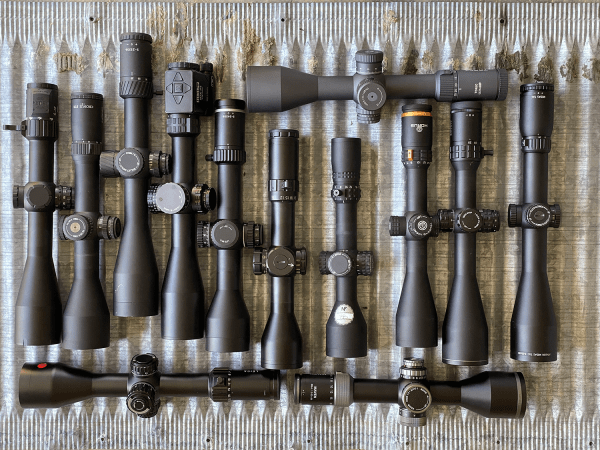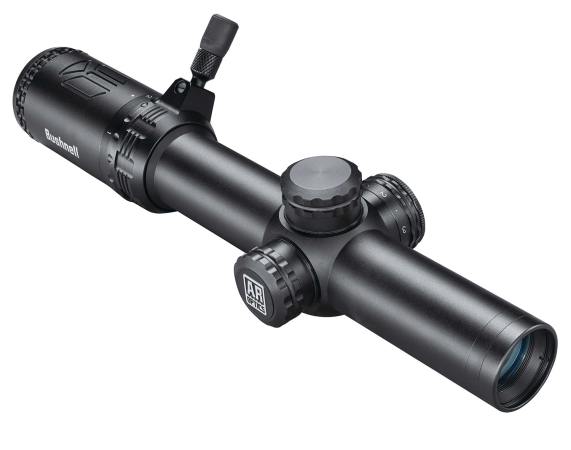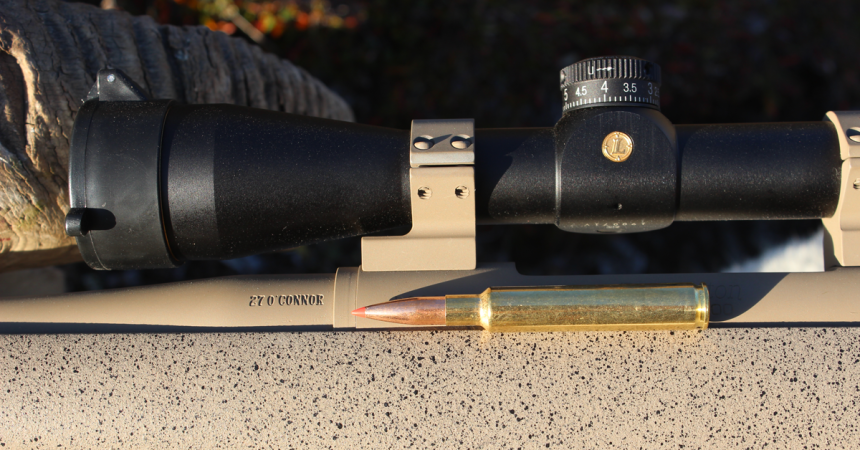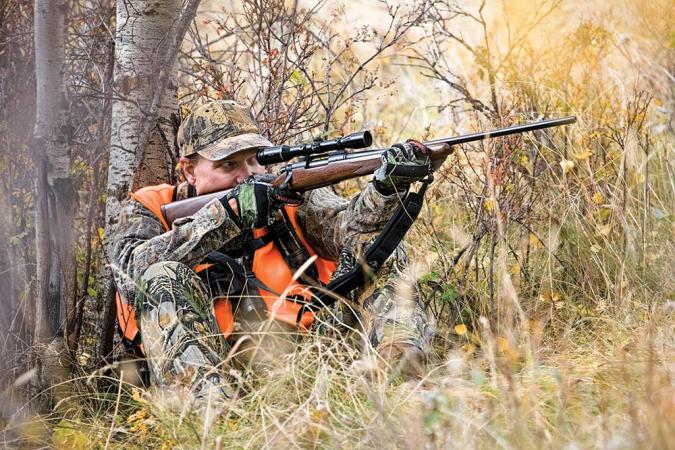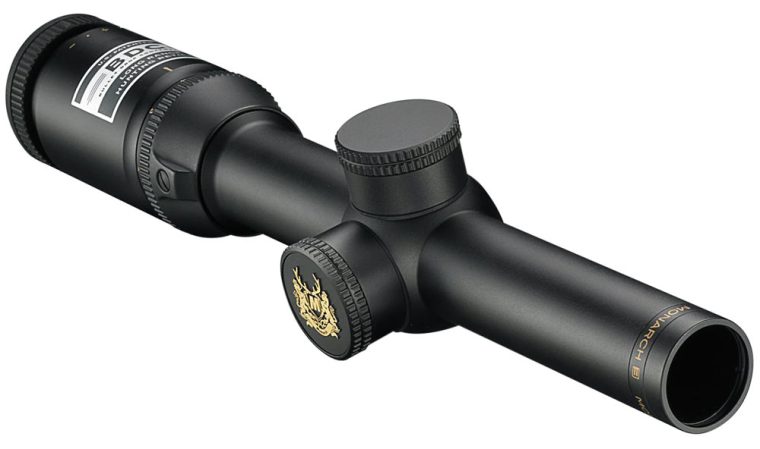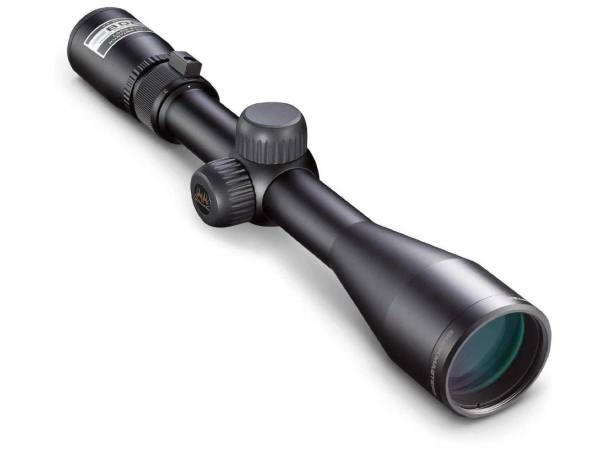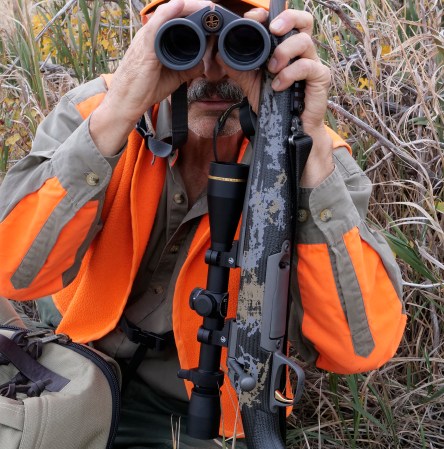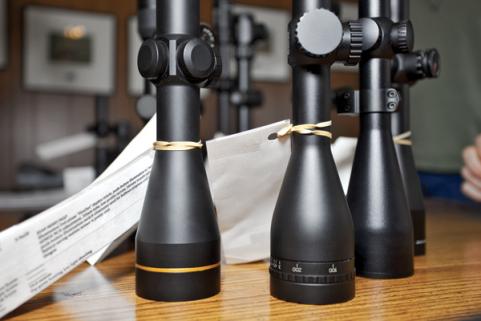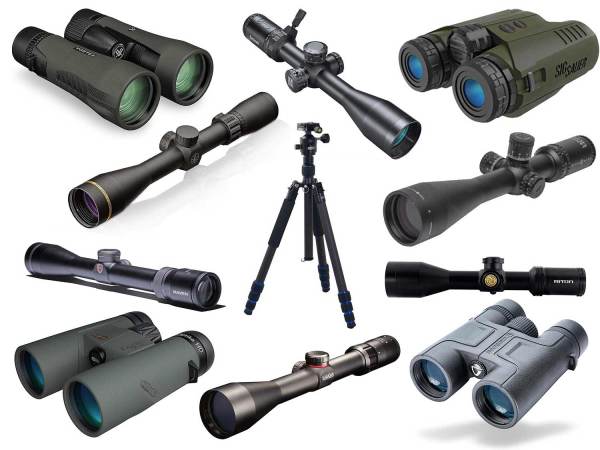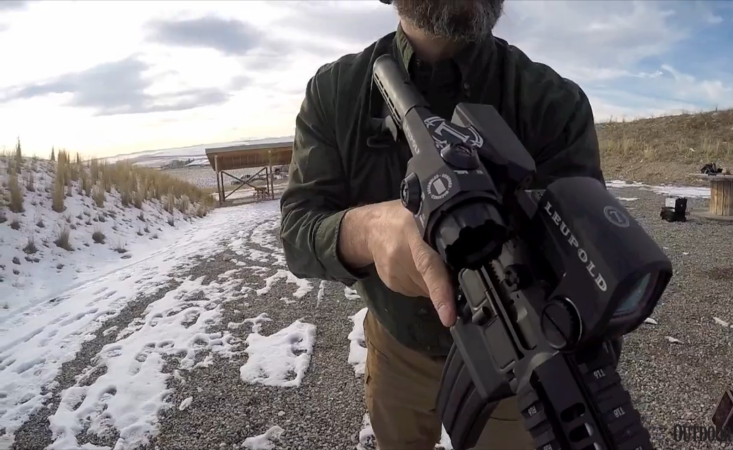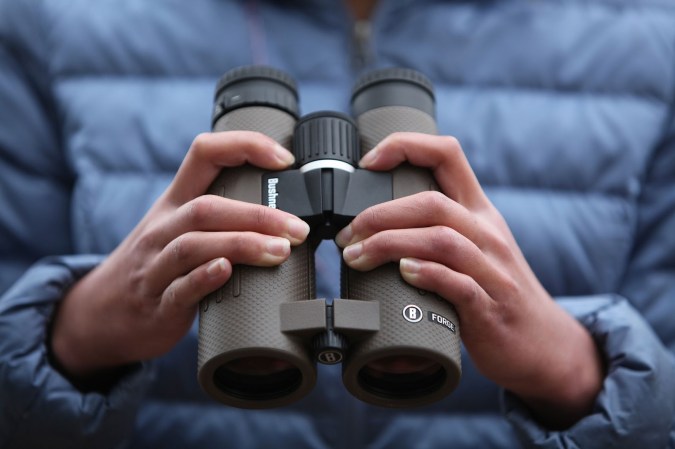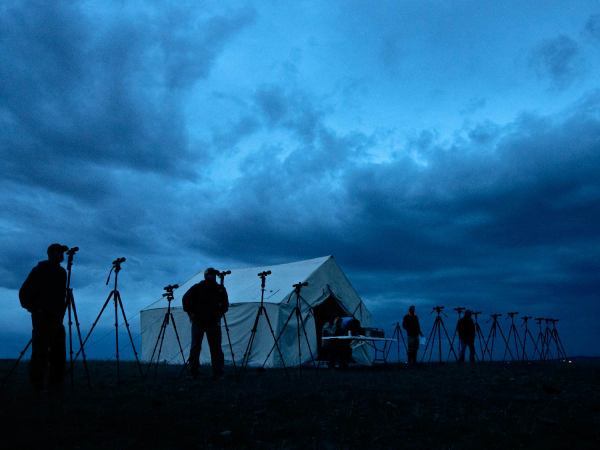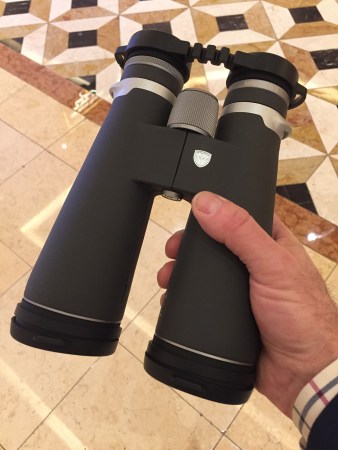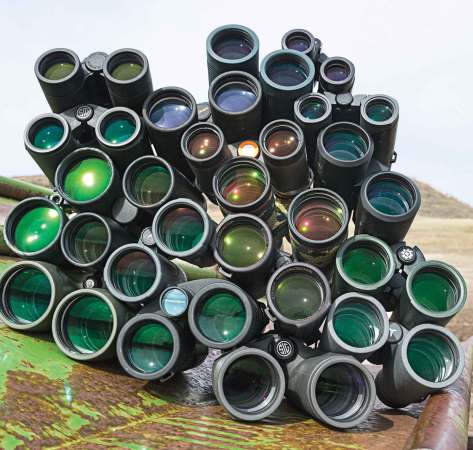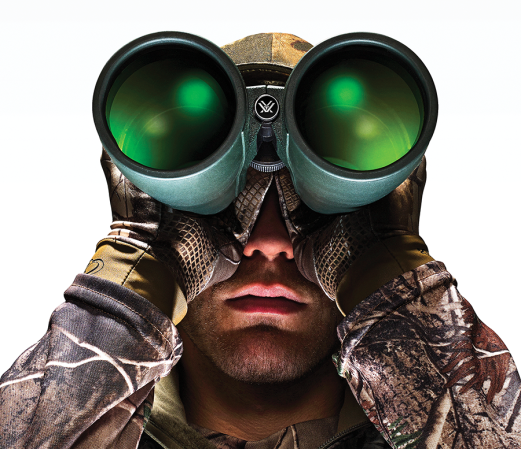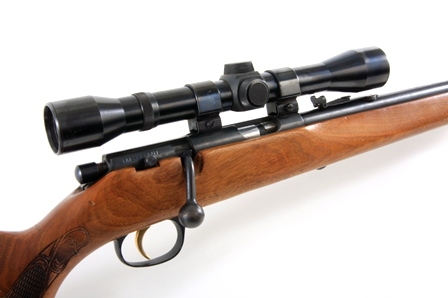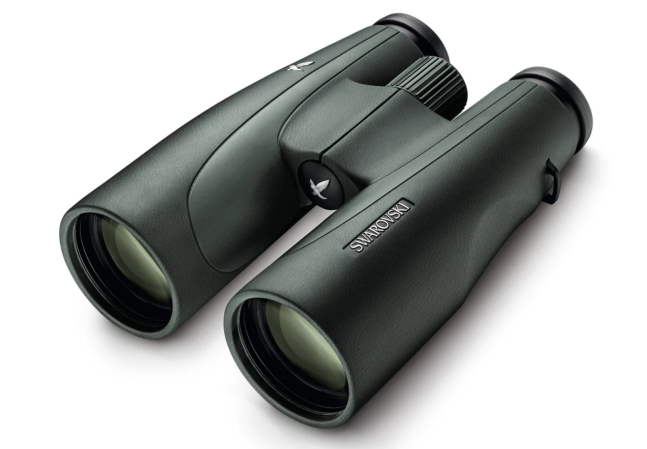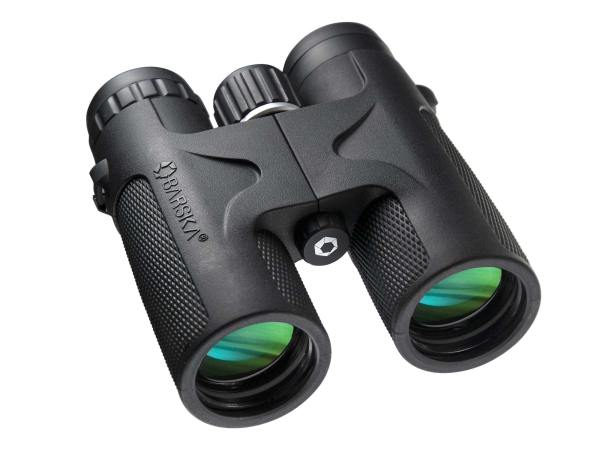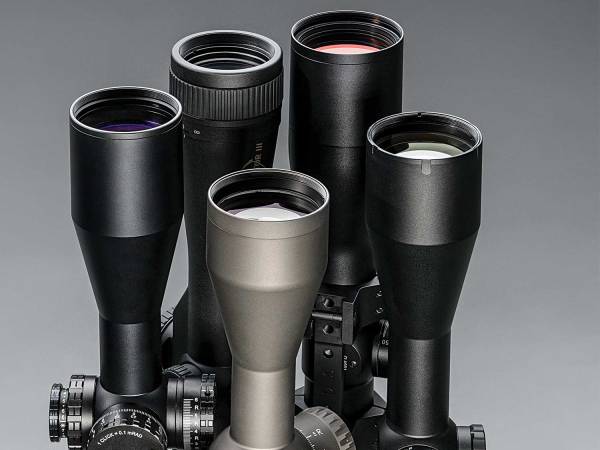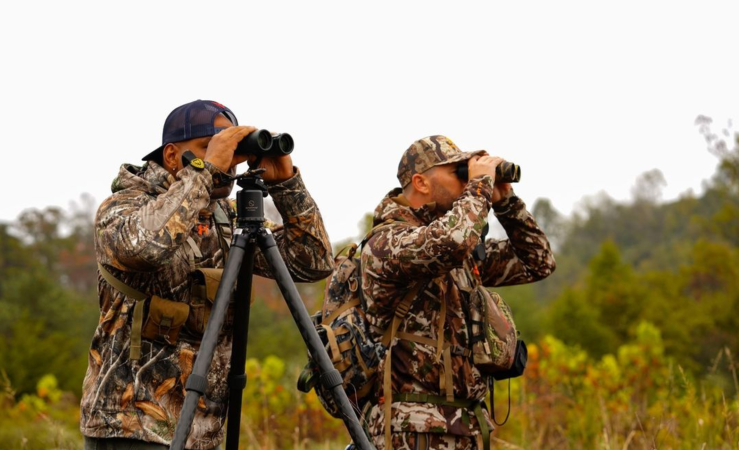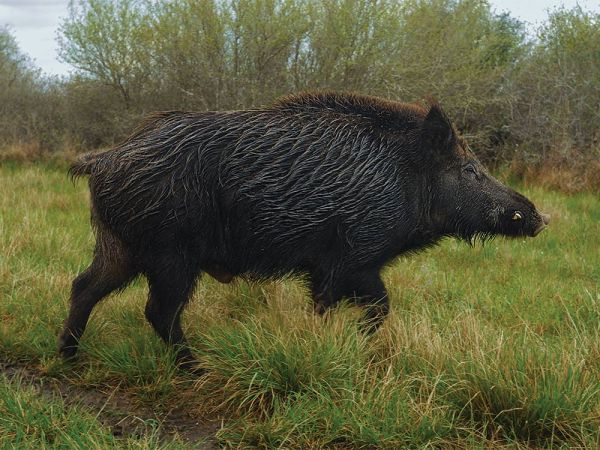We may earn revenue from the products available on this page and participate in affiliate programs. Learn More ›
American hunters have been brainwashed into thinking they want the brightest riflescope they can buy.
They don’t.
Light-gathering ability is mainly a function of objective-lens size, which means the brightest riflescopes would be too large and unwieldy to be much help in the places most of us hunt. Picture a 65mm or an 80mm spotting scope strapped to your rifle. Bright as hell, but hugely impractical.
So, what’s the best magnification and configuration for big-game hunters? Like most things, it depends. But for all-around utility, it’s hard to go wrong with the classic configurations: a 2-10×42 or a 3-9×40. Here’s why:
**
LOW AND HIGH MAG**
Assuming we’re talking here about second-image-plan reticles and what can be considered classic hunting scopes, as opposed to tactical scopes mainly used for target shooting, you want an optic with the best combination of light-gathering, magnification, and resolution (like the Bushnell scope we tested above).
One of the laws of optics is that as you change one of these legs of the stool, the other legs will also change. The wide range of magnification gives you the ability to dial down the power to gather more light and gain situational awareness. The higher mag decreases the amount of light arriving at your eye, but it makes your aiming point larger and clearer.
And the modest-sized objective lens allows you to mount the optic on a variety of actions using standard-height rings. These scopes are generally portable enough to let you carry your scope-mounted with ease in a wide range of terrain.
**
OBJECTIVE LENS**
I used to be in love with big, high-riding 50mm riflescopes. I figured that the super-sized objective would let me gather more light at the time I saw most critters, at the day’s first and last light.
But then I missed a big mule deer at inside 25 yards. I wasn’t expecting to see him so close, but I was stalking another buck when I blew the big boy out of his bed. I didn’t have much time to shoot, but even though my scope was set at 6x, I shot right over him. The reason? I hadn’t practiced shooting at that close distance, but the high-mounted scope was way above my bore at that distance.
A scope that rides closer to your bore has all the ability to reach out at distance, good-quality glass will be adequately bright, and the lower-slung optic will allow you to make those snap shots at close range as easily as those distant shots at higher magnification.


